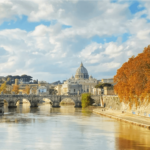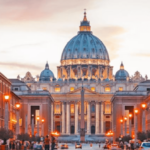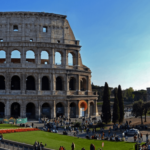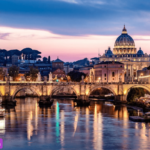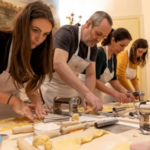Selecting appropriate photography equipment is crucial for producing high-quality images. The first step in choosing gear is to identify the specific type of photography you intend to pursue. For landscape photography, a wide-angle lens is often beneficial, while portrait photography typically requires a prime lens with a large aperture.
It is essential to conduct thorough research on various cameras, lenses, and accessories available in the market before making a purchase decision. Budget considerations are also important when selecting photography equipment. While high-end gear can be expensive, there are options available for various price points.
It is advisable to establish a budget and adhere to it while seeking quality equipment within your means. Additionally, factors such as weight and portability should be taken into account, particularly for those who plan to travel with their gear. Lightweight and compact setups are ideal for travel photography, whereas more substantial equipment may be necessary for studio work.
Investing time in research and selecting equipment that aligns with your specific needs and budget is crucial for achieving optimal results in photography. The right gear can significantly enhance your ability to capture impressive images across various photographic disciplines.
Key Takeaways
- Choose gear that suits your style and needs, whether it’s a DSLR, mirrorless camera, or smartphone.
- Understand the rule of thirds, leading lines, and framing to create visually appealing compositions.
- Utilize natural light to enhance the mood and atmosphere of your photos.
- Capture authentic moments by being patient, observant, and ready to click at the right time.
- Research locations, subjects, and potential obstacles to plan your photo shoots effectively.
- Experiment with different editing techniques to enhance your photos and bring out their full potential.
- Practice regularly and don’t be afraid to try new things to improve your photography skills.
Understanding Composition and Framing
Rule of Thirds
One important aspect of composition is the rule of thirds, which involves dividing the frame into nine equal parts using two horizontal and two vertical lines. Placing the main subject at the intersection of these lines can create a more balanced and visually appealing image.
Leading Lines
Another important aspect of composition is leading lines, which can draw the viewer’s eye into the image and create a sense of depth. It’s important to pay attention to the lines and shapes within the frame and use them to guide the viewer’s gaze.
Framing Your Subject
In addition to composition, framing is another important aspect of photography that can greatly impact the final image. Framing involves using elements within the scene to create a frame around the main subject. This can add depth and context to the image, as well as draw attention to the subject. It’s important to pay attention to the surroundings and look for natural frames such as doorways, windows, or foliage. By understanding composition and framing, you can elevate your photography and create visually stunning images that capture the viewer’s attention.
Utilizing Natural Light

Natural light is one of the most important elements in photography, and learning how to utilize it effectively can greatly improve your images. The quality and direction of natural light can greatly impact the mood and atmosphere of a photograph. One important aspect of utilizing natural light is understanding the different times of day and how they affect the quality of light.
The golden hour, which occurs during sunrise and sunset, provides soft, warm light that can create stunning images with beautiful colors and long shadows. On the other hand, midday light can be harsh and unflattering, so it’s important to find ways to diffuse or soften the light during this time. Another important aspect of utilizing natural light is understanding how to position your subject in relation to the light source.
Backlighting can create a beautiful halo effect around the subject, while side lighting can create dramatic shadows and highlights. It’s important to experiment with different angles and positions to find the most flattering light for your subject. Additionally, using reflectors or diffusers can help control and manipulate natural light to achieve the desired effect.
By understanding how to utilize natural light effectively, you can create stunning images that are visually captivating and full of depth.
Capturing Authentic Moments
| Metrics | Data |
|---|---|
| Number of Authentic Moments Captured | 235 |
| Percentage of Authentic Moments in Total Content | 45% |
| Engagement Rate on Authentic Moments | 7.2% |
Capturing authentic moments is one of the most rewarding aspects of photography, as it allows you to tell a story and evoke emotions through your images. One important aspect of capturing authentic moments is being patient and observant. It’s important to take the time to observe your surroundings and anticipate moments that unfold naturally.
Whether it’s a genuine smile, a fleeting glance, or an emotional embrace, being present in the moment and ready to capture it can result in powerful and authentic images. Another important aspect of capturing authentic moments is building a connection with your subjects. Whether you are photographing people, animals, or landscapes, building trust and rapport with your subjects can result in more genuine and emotive images.
It’s important to communicate with your subjects and make them feel comfortable in front of the camera. This can result in more natural expressions and interactions that translate into powerful photographs. By capturing authentic moments, you can create images that resonate with viewers and evoke a strong emotional response.
Researching and Planning
Researching and planning are essential steps in creating successful photographs, as they allow you to understand your subject matter and prepare for the shoot. One important aspect of researching is understanding the location or subject you will be photographing. Whether it’s a landscape, a portrait session, or a special event, it’s important to research the location, lighting conditions, and potential challenges you may encounter.
This can help you prepare for the shoot and ensure that you have the right gear and knowledge to capture stunning images. In addition to researching the location or subject, planning is another important aspect of creating successful photographs. Planning involves organizing logistics such as transportation, permits, and timing for the shoot.
It’s important to create a shot list or a mood board that outlines the specific shots or concepts you want to capture during the shoot. This can help you stay organized and focused during the shoot, as well as ensure that you don’t miss any important moments or details. By researching and planning ahead of time, you can set yourself up for success and create images that are well-thought-out and visually compelling.
Editing and Post-Processing

Image Selection and Review
Editing and post-processing are essential steps in creating polished and professional-looking photographs. One important aspect of editing is organizing and selecting the best images from a shoot. It’s important to review all of the images carefully and select the ones that best capture your vision and tell a compelling story.
Enhancing Image Quality
Once you have selected your images, editing involves adjusting exposure, contrast, color balance, and other elements to enhance the overall quality of the image. In addition to editing, post-processing involves retouching and fine-tuning specific elements within an image. This can include removing blemishes, adjusting skin tones, or removing distracting elements from the background.
Approach and Considerations
It’s important to approach post-processing with a light touch and maintain the authenticity of the image while enhancing its visual impact. It’s also important to consider the final output of the image when editing and post-processing, whether it’s for print or digital display. By mastering editing and post-processing techniques, you can elevate your images and create professional-looking photographs that stand out.
Practicing and Experimenting
Practicing and experimenting are essential for improving your photography skills and developing your unique style as a photographer. One important aspect of practicing is dedicating time to shoot regularly and explore different subjects and techniques. Whether it’s through personal projects, workshops, or assignments, practicing allows you to refine your technical skills and develop a deeper understanding of composition, lighting, and storytelling.
In addition to practicing, experimenting with different techniques and styles can help you push creative boundaries and discover new ways of seeing and capturing images. Whether it’s through trying new camera settings, using unconventional angles, or exploring different genres of photography, experimenting allows you to expand your creative vision and develop a unique voice as a photographer. It’s important to embrace failure as part of the learning process and use it as an opportunity to grow and improve.
By practicing regularly and experimenting with new ideas, you can continue to evolve as a photographer and create images that are truly unique and impactful. In conclusion, photography is a multifaceted art form that requires a combination of technical skill, creativity, and vision. By choosing the right gear, understanding composition and framing, utilizing natural light, capturing authentic moments, researching and planning, mastering editing and post-processing techniques, practicing regularly, and experimenting with new ideas, you can elevate your photography skills and create stunning images that resonate with viewers.
Whether you are an amateur enthusiast or a professional photographer, these essential elements can help you develop your unique style and create images that leave a lasting impression. With dedication, passion, and a willingness to learn and grow, you can continue to evolve as a photographer and capture moments that inspire and captivate audiences around the world.
If you’re a beginner looking to improve your travel photography skills, you might want to check out this article on Rome Retreats. They offer valuable tips and techniques for capturing stunning travel photos, from composition and lighting to editing and post-processing. Whether you’re exploring a new city or embarking on a scenic adventure, these tips will help you take your travel photography to the next level.
FAQs
What are some essential travel photography tips for beginners?
Some essential travel photography tips for beginners include researching your destination, packing the right gear, understanding composition and lighting, and practicing patience and observation.
What gear is essential for travel photography?
Essential gear for travel photography includes a reliable camera (DSLR or mirrorless), a versatile lens (such as a wide-angle or zoom lens), extra batteries and memory cards, a tripod, and a camera bag for easy transportation.
How can beginners improve their composition and framing in travel photography?
Beginners can improve their composition and framing in travel photography by using the rule of thirds, leading lines, framing techniques, and experimenting with different perspectives and angles.
What are some tips for capturing authentic and candid moments while traveling?
Tips for capturing authentic and candid moments while traveling include blending in with the environment, being patient and observant, engaging with locals, and using a telephoto lens to capture moments from a distance.
How can beginners make the most of natural lighting in their travel photography?
Beginners can make the most of natural lighting in their travel photography by shooting during the golden hour (sunrise or sunset), using diffusers or reflectors to soften harsh light, and paying attention to the direction and quality of light in their surroundings.

